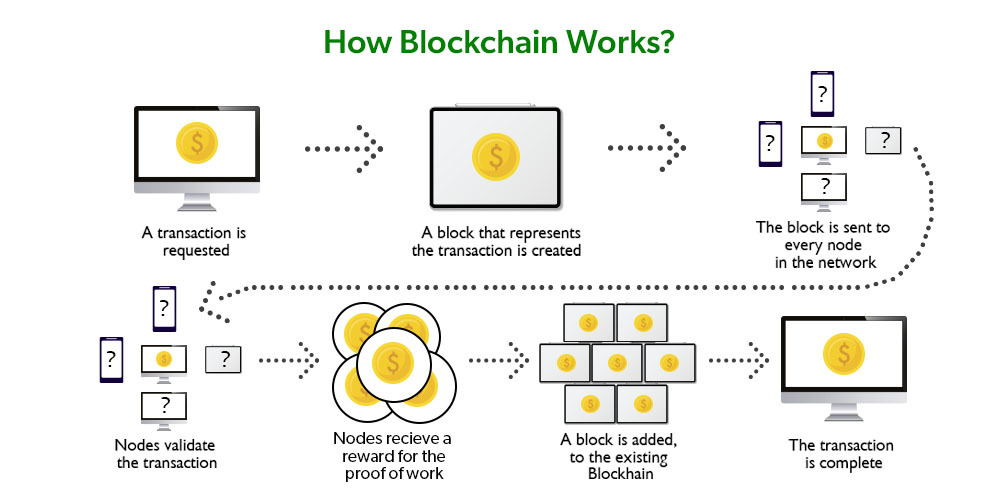Tube Ninja Insights
Your go-to source for the latest trends and tips in video content creation.
Blockchain: The New Digital Frontier
Explore the groundbreaking world of blockchain and discover how it's reshaping our digital future. Join the revolution today!
Understanding Blockchain: How It Works and Its Impact on Our Lives
Understanding Blockchain technology is crucial in today's digital age. At its core, blockchain is a decentralized ledger that securely records transactions across many computers, ensuring that the recorded data cannot be altered retroactively. This process utilizes a consensus mechanism, often through proof of work or proof of stake, to verify the integrity of each transaction. As a result, blockchain provides transparency and enhances security, making it a revolutionary technology for various sectors, including finance, healthcare, and supply chain management.
The impact of blockchain on our lives is becoming increasingly evident. For instance, in finance, blockchain enables faster and cheaper cross-border transactions, eliminating the need for intermediaries like banks. Furthermore, it empowers individuals by giving them greater control over their data and the ability to participate in secure digital identities. As more industries begin to adopt blockchain, its potential to reshape our world continues to grow, prompting us to reconsider how we think about trust, privacy, and the way we interact online.

Top 5 Challenges Facing Blockchain Adoption Today
The adoption of blockchain technology has been hindered by several significant challenges. Scalability remains a critical issue, as blockchain networks often struggle to handle a high volume of transactions quickly. For instance, while traditional payment processors like Visa can process thousands of transactions per second, popular blockchain networks often fall short. This scalability issue can deter businesses from integrating blockchain into their operations.
Furthermore, the interoperability of different blockchain systems poses a challenge. Many organizations have developed their own blockchain solutions that may not communicate effectively with others, creating silos of information and limiting the potential for collaboration and innovation in the space.
Another pressing challenge is regulatory uncertainty. Many governments are still grappling with how to regulate blockchain and cryptocurrency, leading to a lack of clear guidelines for businesses. This regulatory ambiguity can create hesitation among companies considering blockchain adoption due to fears of future penalties or compliance issues.
Lastly, public perception plays a substantial role in blockchain adoption. Concerns about security, fraudulent schemes, and a general misunderstanding of the technology can lead to skepticism among potential users. Addressing these misconceptions is vital for encouraging broader acceptance and fostering a more robust blockchain ecosystem.
Is Blockchain the Future of Secure Transactions?
The advent of blockchain technology has sparked a significant debate about its potential to revolutionize secure transactions. By providing a decentralized and transparent ledger, blockchain eliminates the need for intermediaries, which not only reduces costs but also dramatically increases security. In traditional transaction systems, sensitive information is often stored in centralized databases that are vulnerable to hacks and data breaches. In contrast, blockchain’s distributed nature ensures that data is replicated across numerous nodes, making it nearly impossible for any single entity to manipulate or corrupt the transaction records.
Moreover, the use of cryptographic techniques in blockchain adds an additional layer of security, safeguarding transactions from fraud and unauthorized access. As we witness an increasingly digital economy, the demand for secure transactions becomes paramount. Various sectors, including finance, supply chain, and healthcare, are beginning to integrate blockchain solutions to enhance their security protocols. With its robust framework and growing acceptance among businesses and consumers alike, many experts argue that blockchain could indeed be the future of secure transactions, heralding a new era of trust and accountability in digital exchanges.